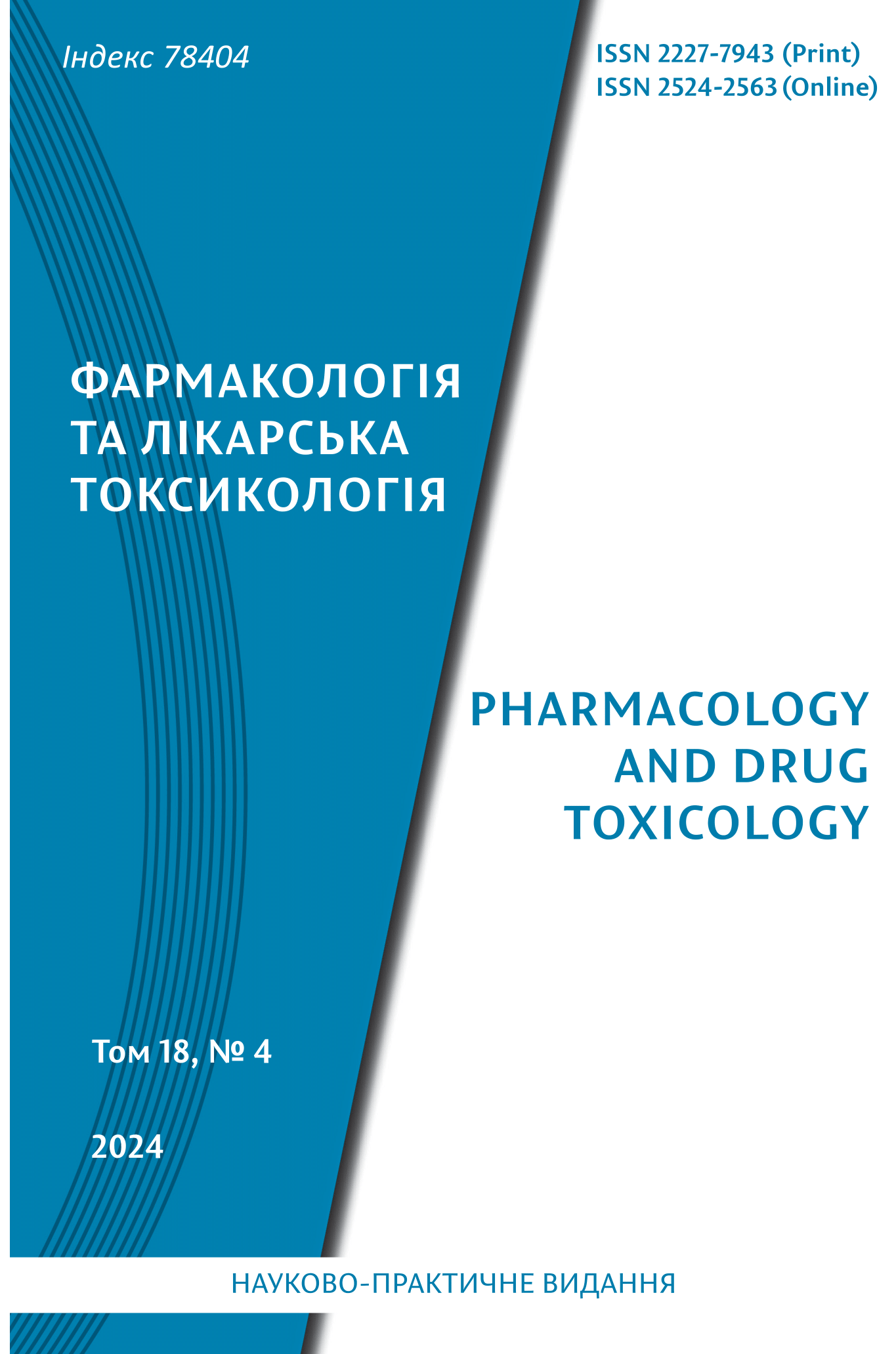Abstract
Today, much attention is paid to the therapy of inflammatory processes that accompany many diseases. In this direction, an active search for medicinal products of plant origin with a complex effect is carried out.
The aim of the study was to determine the optimal conditions for the extraction of biologically active substances from the leaves and green fruits of Juglans regia L. for their further use in the composition of the ointment with potential anti-inflammatory and analgesic effects.
Spectrophotometric methods of analysis were used to study the content of polyphenolic compounds and flavonoids in the extracts; the antioxidant (antiradical) activity of the extracts was determined by the spectrophotometric method using the DPPH reagent; the anti-inflammatory activity of 4% ointment based on extracts from the leaves and green fruits of Juglans regia L. was studied on the model of carrageenaninduced edema of the hind limb in rats; analgesic activity – according to the «hot plate» and «chemical irritation» tests on mice. 4% ointment with ibuprofen was used as a reference drug.
It was established that the extract from the leaves of Juglans regia L., prepared under conditions of
maceration, contains the maximum amount of flavonoids, the extract from the core of the fruit, prepared under the conditions of maceration with preliminary boiling, contains the maximum amount of polyphenolic compounds. The maximum antioxidant activity was registered precisely for these extracts, which were chosen to prepare 4% ointment and study its anti-inflammatory and analgesic effects.
In a model of carrageenan-induced edema, it was shown that the application of an extract-based ointment leads to an inhibition of the inflammatory process compared to untreated animals, reducing the width and volume of the affected limb throughout the experiment on average by 30% and 20%, respectively. The effect of the ointment with the extract was inferior compared to ibuprofen only on the first day of its use, in other observation intervals the differences were not statistically significant. Analgesic effect of ointment based on extracts increases (3.4 times compared to the control) the latent time of a painful reaction manifestation in the «hot plate» test and reduces the duration of the painful reaction (2 times compared to the control) in chemical irritation test with allyl isothiocyanate on mice. The algesic effect of extract-based ointment is not inferior to the action of ointment with ibuprofen.
Thus, a 4% ointment was made based on thick extracts from the leaves and core of the green fruits of Juglans regia L., which contain the largest amount of flavonoids and polyphenolic compounds and exhibit maximum antioxidant activity. The proposed ointment has an anti-inflammatory and analgesic effects, which indicates the expediency of further research in this direction.
